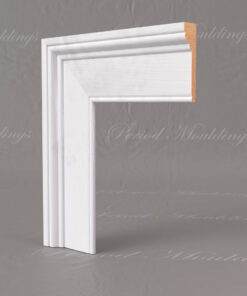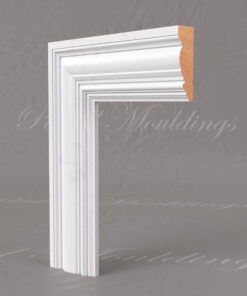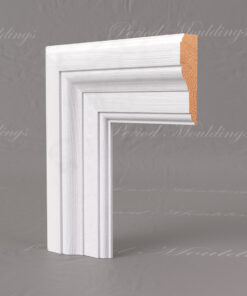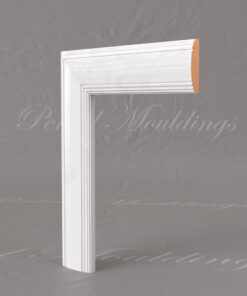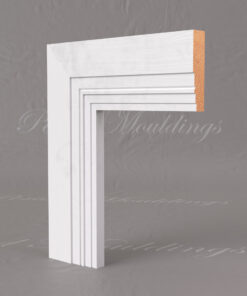Interior design is important to us because we spend so much time in our homes and we want our castle and our safe place to be the best it can possibly be. And as we gaze around the room during the ad breaks on TV we are often side-tracked by features that need replacing or have always nagged you because they just don’t work. It can take us weeks and months to get around to replacing or repairing these items, but when we do we feel a satisfactory sense of completeness.
Architrave is one of the features of the home that doesn’t receive as much attention as it should, because it holds important practical and decorative functions, and perhaps we would notice it more if it wasn’t there or if it needed replacing.
This guide is intended to help you with something you maybe haven’t had to consider before, choosing which type of architrave to buy.
What is architrave?
Architrave is a type of interior moulding typically found in traditional or period homes, but which is still popular in contemporary homes. Architrave can be fitted around doors and windows as a trim to hide joints and cracks in the walls. It essentially covers the meeting of wall and door/window frame much like a skirting board covers the joint of wall and floor. As well as hiding joints, architrave can also disguise any movement in the wall which might occur over time, and can cover drafts and the ingress of air which might occur through cracks and joints.
So architrave has a functional purpose, but it is also an important decorative feature which, again, you might not always notice, but if you choose the wrong style of architrave this will most definitely stand out and remain a source of regret until you replace it for a second time.
The importance of choosing the right size of architraves
We know that architrave is a type of trim that covers all three lengths of a door frame and all exposed lengths of a window frame, so there is a lot of architrave on show. This means it is important to choose the right size of architrave.
If you are installing a completely new set of architraves where there hasn’t been architrave before, then you have the freedom to choose any size you want, because it doesn’t have to match any existing features. However, you do need to think about balance. Where in the room is the door or window? If it is close to a wall, for example, you don’t want architrave with a wide thickness. You need to leave a good amount of space between your architrave and the wall or the balance will be all wrong. You also need to think about your skirting boards. Architrave is generally thicker than skirting boards but they can both be the same size, so think about how they balance and how they look together, because they have to meet at some point. Although you can also install blocks to help with this transition and make it as neat as possible.
Where you have existing architraves and are just replacing one section, or a few sections, of course you need consistency. Take a look at our range of architrave and choose the right size. 70mm is the standard size for most architrave in the UK, but our range goes from 55mm to 144mm thickness and with a depth of 21mm to 44mm. We supply all our architrave in standard lengths of 2.4 metres so you can cut your own lengths to size and this helps to maintain our architrave at cost-effective prices.
Which style of wooden architraves should I choose?
At Period Mouldings we can supply a wide range of architrave from different design periods, so with a sample you should be able to find a piece to match your existing architrave, but even if you can’t we can produce a bespoke section of skirting if you can provide a good sample to work to. Consistency is important in your home so if you have a Victorian, Georgian or Edwardian home, or even a contemporary home, we can supply architrave to match your existing skirting boards, period doors and ceiling mouldings. Look at the profiles of the architrave, hand-finished by our expert traditional craftspeople, and try to find the one that most closely matches yours.
What type of wood is best for my architraves?
Wood is the best material to use for your architrave because it is strong, robust and hard-wearing while it also retains its natural look even after you have applied a finish. Natural woods such as Oak, Pine, Sapele and Tulipwood won’t warp, crack or split like MDF can, and they can all be sanded down to apply a different finish if you fancy a change, and will still look as beautiful, decorative and natural as when you first installed them.
This natural look is ideal for traditional homes and also means you can decide whether to retain a natural finish by applying stain or varnish, or you can apply a layer of primer and a top coat of whatever colour you want. But you will still be able to see the grain in the wood. All our standard lengths of wooden architraves are supplied untreated so you have a blank canvass and can finish your architrave however you wish to match your interior décor.
Take a look at our range of wooden architraves at Period Moulding and contact us for help with choosing the right size, design period and type of wood to make sure your interior design fulfils the potential of your beautiful period home.




